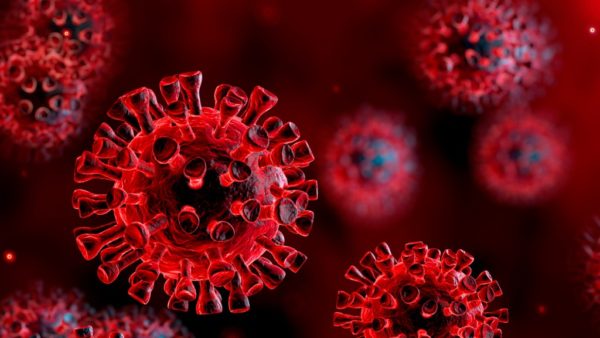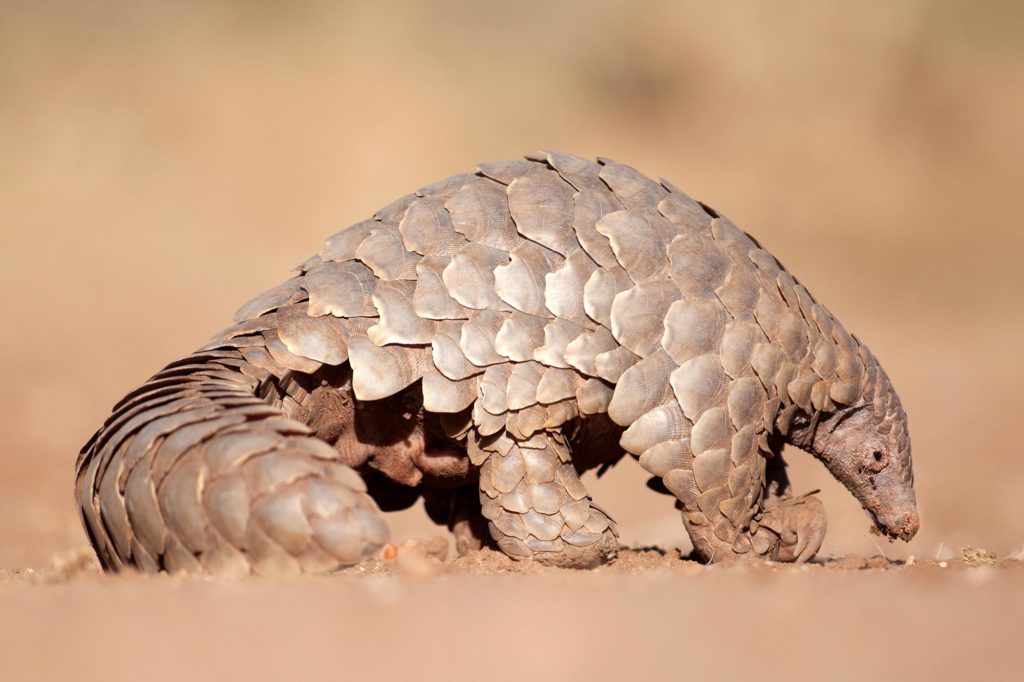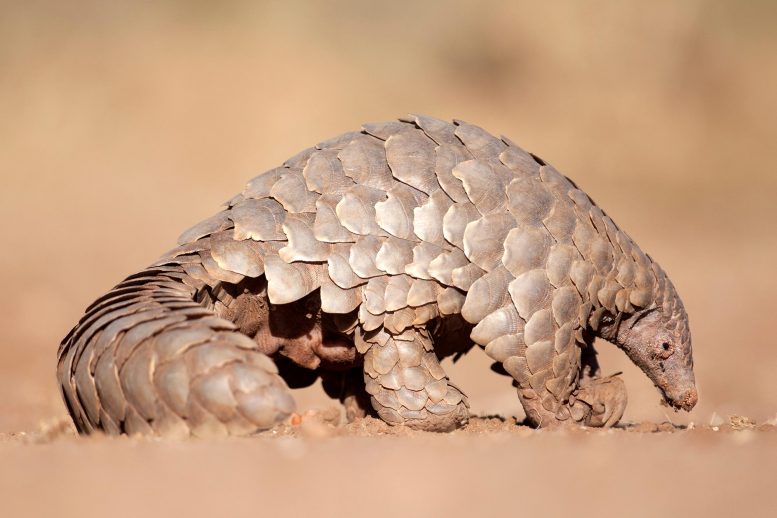The genetic quest to understand COVID-19 will help us prevent other diseases.

How the novel coronavirus that causes COVID-19 made the leap from animals to humans is a puzzle that scientists are trying to solve as humanity comes to grip with the deadly pandemic sweeping the globe.
At the frontline of this scientific work is Professor Edward Holmes, an evolutionary virologist who holds a joint position with the School of Life and Environmental Sciences and the School of Medical Sciences at the University of Sydney.
He has been working closely with scientists in China and around the world to unlock the genetic code of SARS-CoV-2, which is the virus that causes COVID-19, to understand its origins and assist in the race other scientists are engaged in to find an effective vaccine.
Their work will also help in the monitoring and prevention of other viruses that could potentially transfer from wildlife into humans, causing what are known as zoonotic diseases.
Already this year, Professor Holmes has co-authored four papers on the novel coronavirus, including two of the earliest descriptions of the virus (published in Nature[1] and The Lancet[2]).
This week he publishes two more.
Brought forward for early publication on Thursday by Nature[3] after peer review, the first paper identifies a similar coronavirus to the one now infecting humans in the Malayan pangolin population of southern China. Professor Holmes, a co-author, is the only non-China based academic on the paper.

 “The role that pangolins play in the emergence of SARS-CoV-2 (the cause of COVID-19) is still unclear. However, it is striking that the pangolin viruses contain some genomic regions that are very closely related to the human virus,” said Professor Holmes.
“The role that pangolins play in the emergence of SARS-CoV-2 (the cause of COVID-19) is still unclear. However, it is striking that the pangolin viruses contain some genomic regions that are very closely related to the human virus,” said Professor Holmes.Understanding the evolutionary pathway by which this novel coronavirus has transferred to humans will help us not only combat the current pandemic but assist in identifying future threats from other coronaviruses in other species.
This paper is an important part of solving that puzzle.
Professor Holmes said: “The role that pangolins play in the emergence of SARS-CoV-2 (the cause of COVID-19) is still unclear. However, it is striking that the pangolin viruses contain some genomic regions that are very closely related to the human virus. The most important of these is the receptor binding domain that dictates how the virus is able to attach and infect human cells.”
The paper identifies pangolins as possible intermediate hosts for the novel human virus that has emerged. The authors call for these animals and others to be removed from wet markets in order to prevent zoonotic transmission to humans.
Professor Holmes said: “It is clear that wildlife contains many coronaviruses that could potentially emerge in humans in the future. A crucial lesson from this pandemic to help prevent the next one is that humans must reduce their exposure to wildlife, for example by banning ‘wet markets’ and the trade in wildlife.”
Just last week Nature Medicine[4] published research co-authored by Professor Holmes with scientists from Scripps Research Institute in La Jolla California, the University of Edinburgh, Columbia University in New York and Tulane University, New Orleans.
That paper has dispelled the fanciful idea that the novel coronavirus was a manufactured biological agent.
Using comparative analysis of genomic data, the scientists show that SARS-CoV-2 is not a laboratory construct or a purposefully manipulated virus.
Professor Holmes said: “There is simply no evidence that SARS-CoV-2 — the cause of COVID-19 — came out of a lab. In reality, this is the sort of natural disease emergence event that researchers in the field like myself have been warning about for many years.”
That paper has quickly become the highest ranked academic study of all time as measured by Altmetric, a company that monitors media coverage of research papers.
“The high Altmetric is a strong indication of the remarkable global interest in this topic,” Professor Holmes said.
And today, Professor Holmes publishes a commentary in the journal Cell[5] with his colleague Professor Yong-Zhen Zhang from the Shanghai Public Health Clinical Centre and the School of Life Science at Fudan University, Shanghai.
In that article they outline our current knowledge of what the genomic data reveals about the emergence of SARS-CoV-2 virus and discuss the gaps in our knowledge.
This includes taking samples from the Wuhan wet market where it is believed the virus originated. The paper says that “genome sequences of ‘environmental samples’ — likely surfaces — from the market have now been obtained and phylogenetic analysis reveals that they are very closely related to viruses sampled from the earliest Wuhan patients.”
However, Professor Holmes and Professor Zhang are quick to point out that as “not all of the early [COVID-19] cases were market associated, it is possible that the emergence story is more complicated than first suspected”.
The paper says that the SARS-CoV-2 virus is likely to become the fifth endemic coronavirus in the human population. It concludes that “coronaviruses clearly have the capacity to jump species boundaries and adapt to new hosts, making it straightforward to predict that more will emerge in the future.”
How we respond to that will require more research to assist develop public health policy.
They point to policy and other measures to help prevent other coronaviruses becoming a health danger to humans. These include:
- Surveillance of animal coronaviruses in a variety of mammalian species. It is known that bats carry many coronaviruses, we know little about what other species carry these viruses and which has the potential to emerge in humans.
- Increase action against the illegal wildlife trade of exotic animals
- Removal of mammalian and perhaps avian wildlife from wet markets
References:
- “A new coronavirus associated with human respiratory disease in China” by Fan Wu, Su Zhao, Bin Yu, Yan-Mei Chen, Wen Wang, Zhi-Gang Song, Yi Hu, Zhao-Wu Tao, Jun-Hua Tian, Yuan-Yuan Pei, Ming-Li Yuan, Yu-Ling Zhang, Fa-Hui Dai, Yi Liu, Qi-Min Wang, Jiao-Jiao Zheng, Lin Xu, Edward C. Holmes and Yong-Zhen Zhang, 3 February 2020, Nature.
DOI: 10.1038/s41586-020-2008-3 - “Genomic characterisation and epidemiology of 2019 novel coronavirus: implications for virus origins and receptor binding” by Prof Roujian Lu, MSc; Xiang Zhao, MD; Juan Li, PhD; Peihua Niu, PhD; Bo Yang, MSc; Honglong Wu, MSc; Prof Wenling Wang, PhD; Hao Song, PhD; Baoying Huang, PhD; Na Zhu, PhD; Prof Yuhai Bi, PhD; Prof Xuejun Ma, PhD; Prof Faxian Zhan, PhD; Liang Wang, PhD; Tao Hu, MSc; Hong Zhou, PhD; Prof Zhenhong Hu, MD; Prof Weimin Zhou, MD; Li Zhao, PhD; Jing Chen, MSc; Yao Meng, PhD; Ji Wang, PhD; Yang Lin, BS; Jianying Yuan, MSc; Zhihao Xie, BS; Jinmin Ma, PhD; Prof William J Liu, PhD; Prof Dayan Wang, PhD; Prof Wenbo Xu, MD; Prof Edward C Holmes, PhD; Prof George F Gao, DPhil; Prof Guizhen Wu, MD; Prof Weijun Chen, PhD; Prof Weifeng Shi, PhD and Prof Wenjie Tan, MD, 22 February 2020, The Lancet.
DOI: 10.1016/S0140-6736(20)30251-8 - “Identifying SARS-CoV-2 related coronaviruses in Malayan pangolins” by Tommy Tsan-Yuk Lam, Marcus Ho-Hin Shum, Hua-Chen Zhu, Yi-Gang Tong, Xue-Bing Ni, Yun-Shi Liao, Wei Wei, William Yiu-Man Cheung, Wen-Juan Li, Lian-Feng Li, Gabriel M. Leung, Edward C. Holmes, Yan-Ling Hu and Yi Guan, 26 March 2020, Nature.
DOI: 10.1038/s41586-020-2169-0 - “The proximal origin of SARS-CoV-2” by Kristian G. Andersen, Andrew Rambaut, W. Ian Lipkin, Edward C. Holmes and Robert F. Garry, 17 March 2020, Nature Medicine.
DOI: 10.1038/s41591-020-0820-9 - “A Genomic Perspective on the Origin and Emergence of SARS-CoV-2” by Yong-Zhen Zhang and Edward C. Holmes, 26 March 2020, Cell.
DOI: 10.1016/j.cell.2020.03.035.
Leave a Reply
You must be logged in to post a comment.